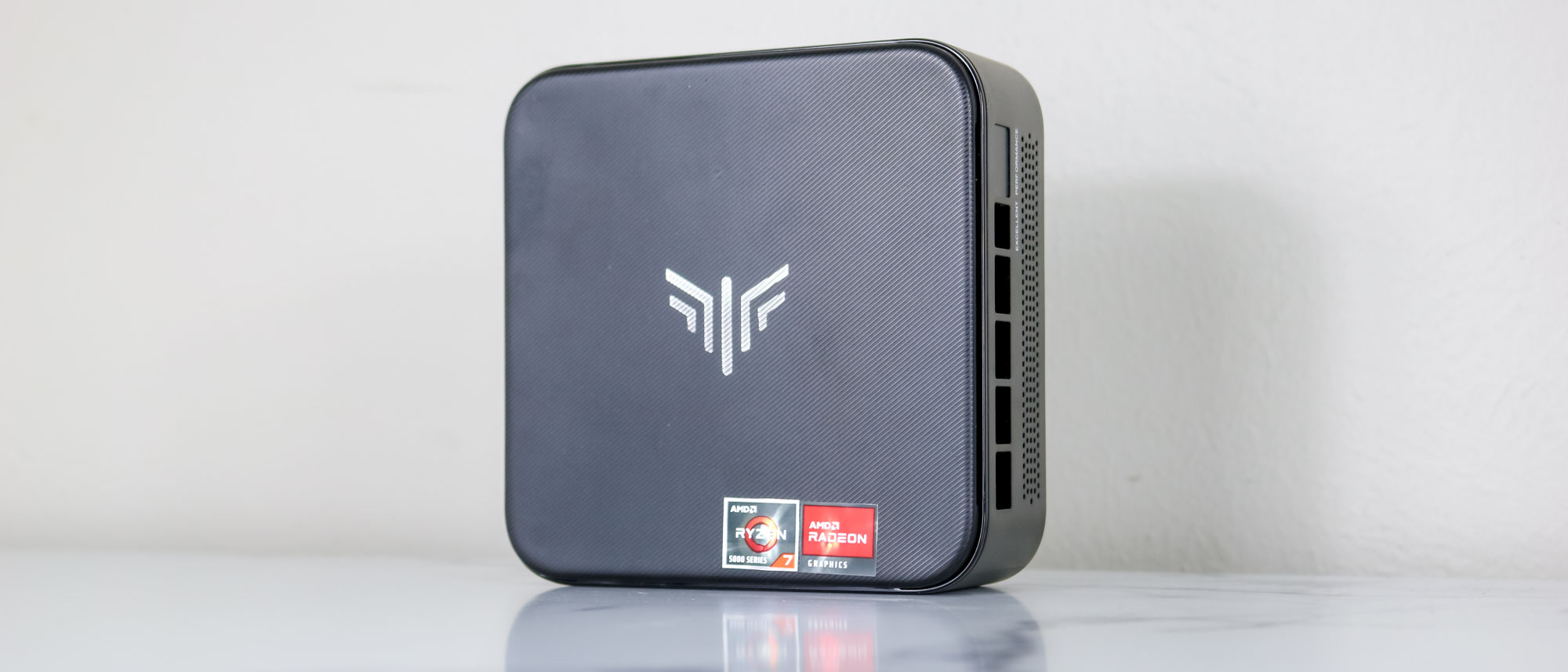Tom's Guide Verdict
The Kamrui E3B is a sleek, compact and well-designed budget mini PC in a compact case. It has a good selection of front and rear ports with support for up to three displays and runs almost dead silent when in use. Some corners were cut to get the E3B’s price so low but you can easily swap in a faster M.2 SSD or add more memory if its performance falls short of your expectations.
Pros
- +
Near silent while in use
- +
Sleek and compact design
- +
Good variety of front and back ports
- +
Great performance for a budget mini PC
Cons
- -
Slow internal SSD
- -
Slight hang-ups with heavy multitasking
Why you can trust Tom's Guide
The Kamrui E3B is a compact mini PC with a sleek, all-black design and a great selection of front and rear ports. Despite its more premium look, though, this is a budget mini PC that cuts a few corners to keep its price low.
Even at $400, the Kamrui E3B is well-equipped for browsing the web, office work and even some light gaming. Under the hood, it sports an AMD Ryzen 7 CPU with integrated Radeon RX Vega 8 graphics. While it’s only available with 16GB of DDR4 RAM and a 512GB SSD, you can add up to 64GB of RAM and up to 4TB of storage thanks to the extra M.2 slot. The Karmui E3B is also VESA-mountable and with the included adapter, you can mount it behind your monitor.
Nearly silent in operation, this mini PC features a large fan at the top of its case with vents for expelling hot air and bringing in cold air on either side. It may not be the fastest, but the Kamrui E3B is more than good enough to get the job done. With support for up to three displays, you can easily add it to a multi-monitor setup and its small size is perfect for cramped desks.
My Kamrui E3B review will help you decide if this is the best mini PC for those on a budget or if it’s worth spending a bit more on something more powerful.
Kamrui E3B: Cheat Sheet
- What is it? A budget mini PC designed for web browsing, office work and some light gaming.
- Who is it for? Those looking for an affordable mini PC with a great price-to-performance ratio.
- What does it cost? The Kamrui E3B mini PC costs $419 on the company’s site, $399 on Amazon and has dropped to as low as $269 when on sale.
- What do we like? Its all-black design, that it’s nearly silent while in use, the cooling vents throughout and the large fan, the variety of front and rear ports, that it supports up to three displays and how you can upgrade its RAM and storage.
- What don’t we like? The Kamrui E3B performs well for the price, but there were some slowdowns during multitasking as well when reading and writing files to its built-in SSD.
Kamrui E3B: Specs
| Header Cell - Column 0 | Kamrui E3B |
|---|---|
| Price | $399 |
| CPU | Ryzen 7 PRO 5875U |
| GPU | AMD Radeon RX Vega 8 |
| RAM | 16GB DDR4 (expandable up to 64GB) |
| Storage | 512GB M.2 SSD, 1 x M.2 2280 (expandable up to 4TB) |
| Ports | 2 x USB-A, 1 x USB-C 3.2 gen2, 3.5mm audio jack (front), 4 x USB-A, 1 x DisplayPort 1.4, 1 x HDMI 2.0, 1 x gigabit Ethernet (back) |
| Connectivity | Wi-Fi 6, Bluetooth 5.2 |
| Size | 5.2 x 5.2 x 1.97 inches |
| Weight | 1.1 pounds |
Kamrui E3B: The ups
The Kamrui E3B checks almost all the boxes when it comes to a mini PC for getting things done. It’s compact, quiet, very affordable and has plenty of front and rear ports for connecting multiple displays and the rest of your wired devices.
Small, sleek and nearly silent
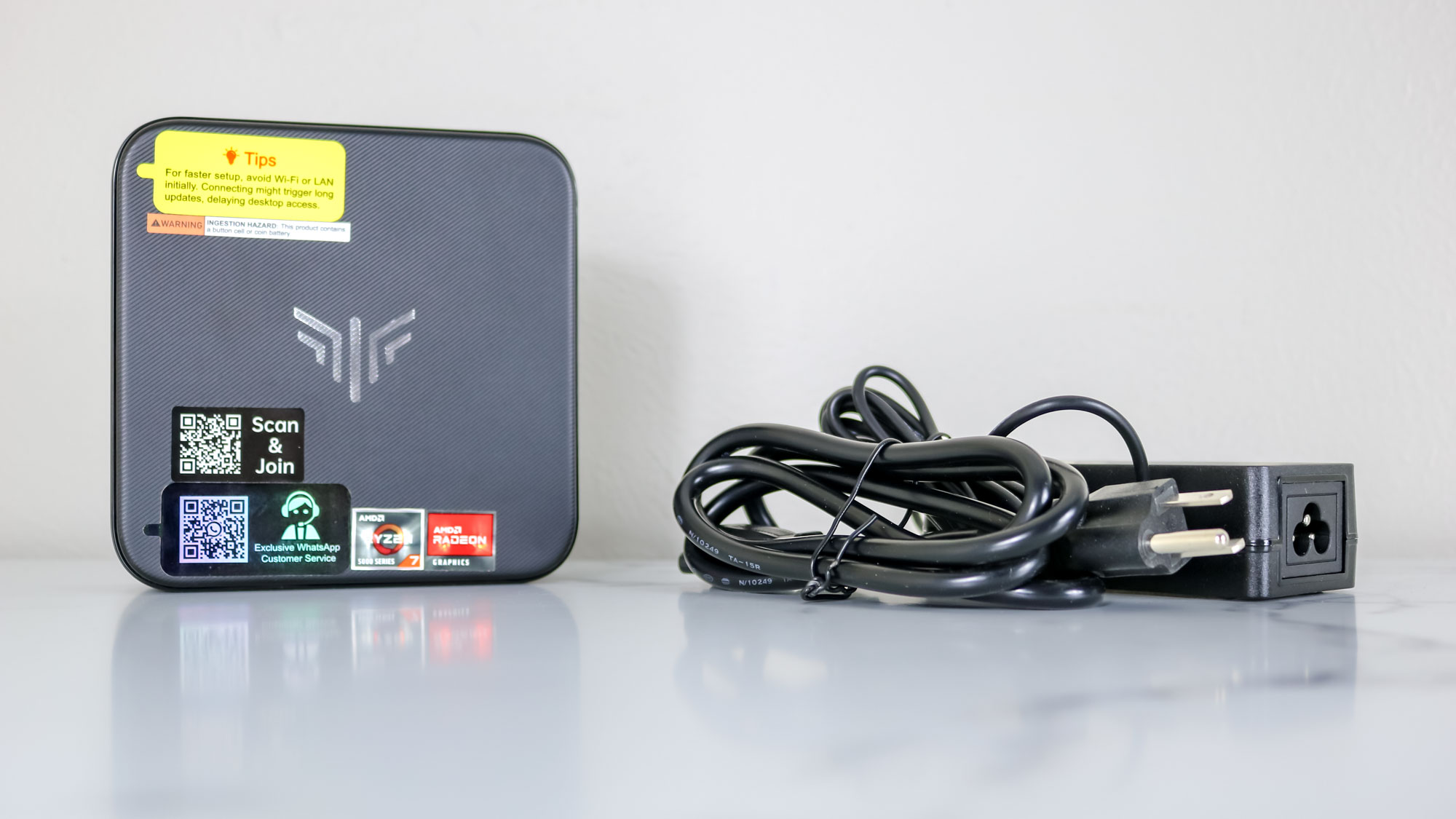
At just 5.2 x 5.2 x 1.97 inches, the Kamrui E3B is just a hair bigger than Apple’s new Mac mini M4. This is great if you have a crowded desk or want to slip this mini PC under a desk shelf. Likewise, it’s compact enough to bring with you on a trip and unlike some of the other mini PCs I’ve tested in the past, its AC adapter is also quite small.
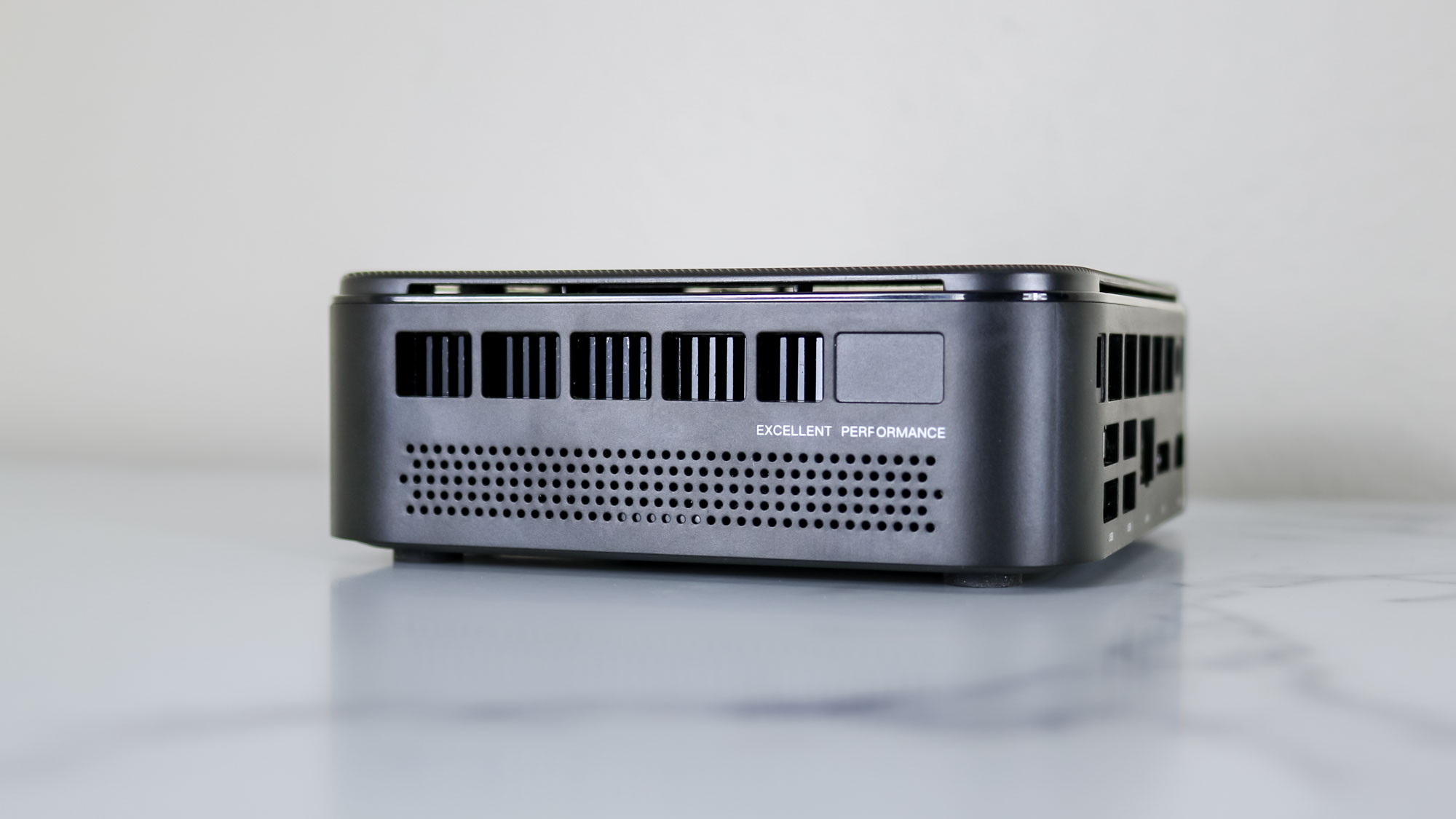
By going with an all-black design and not plastering its logo all over the case, Kamrui has helped set the E3B apart from the competition. There’s just the company’s logo (without the name) on its lid and for some reason, the words “Excellent Performance” in all caps written on the side.
Get instant access to breaking news, the hottest reviews, great deals and helpful tips.
Under the lid, there’s a large fan that pushes cold air through vents on either side and under them, a row of perforations to bring cool air in. During the month or so I’ve used the Kamrui E3B as my daily driver, it’s been almost completely silent. If I listen really closely, I can hear the fan but it isn’t anything like the much louder one on the Acemagic F2A.
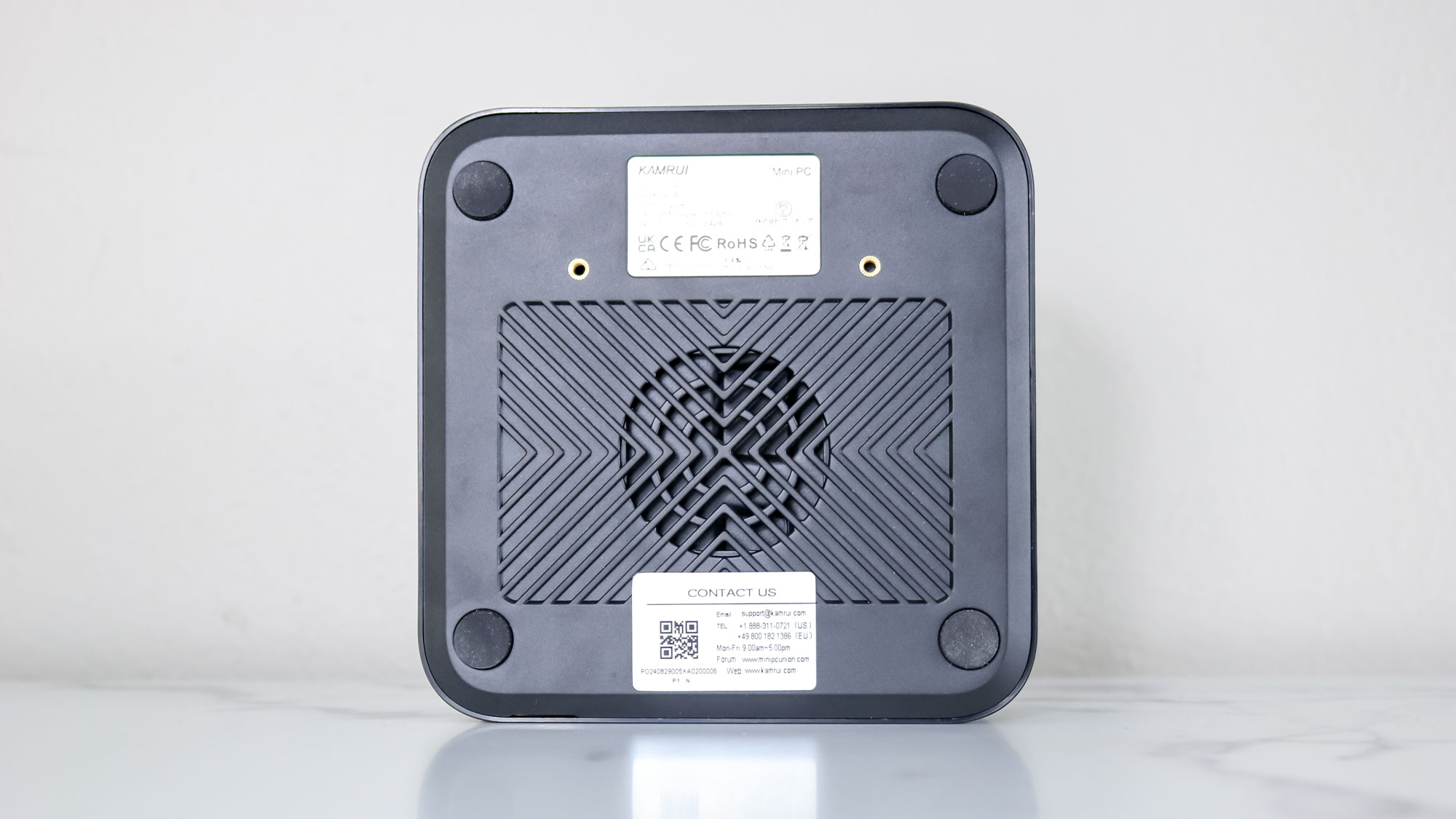
On the underside of the E3B, there’s a medium-sized hole to bring in cool air, smaller holes for the VESA mount adapter and rubber feet on the corners. To open the case, you need to carefully pry off the rubber feet and unscrew the screws under them. This allows you to upgrade the E3B’s memory or storage.
Ports where you need them
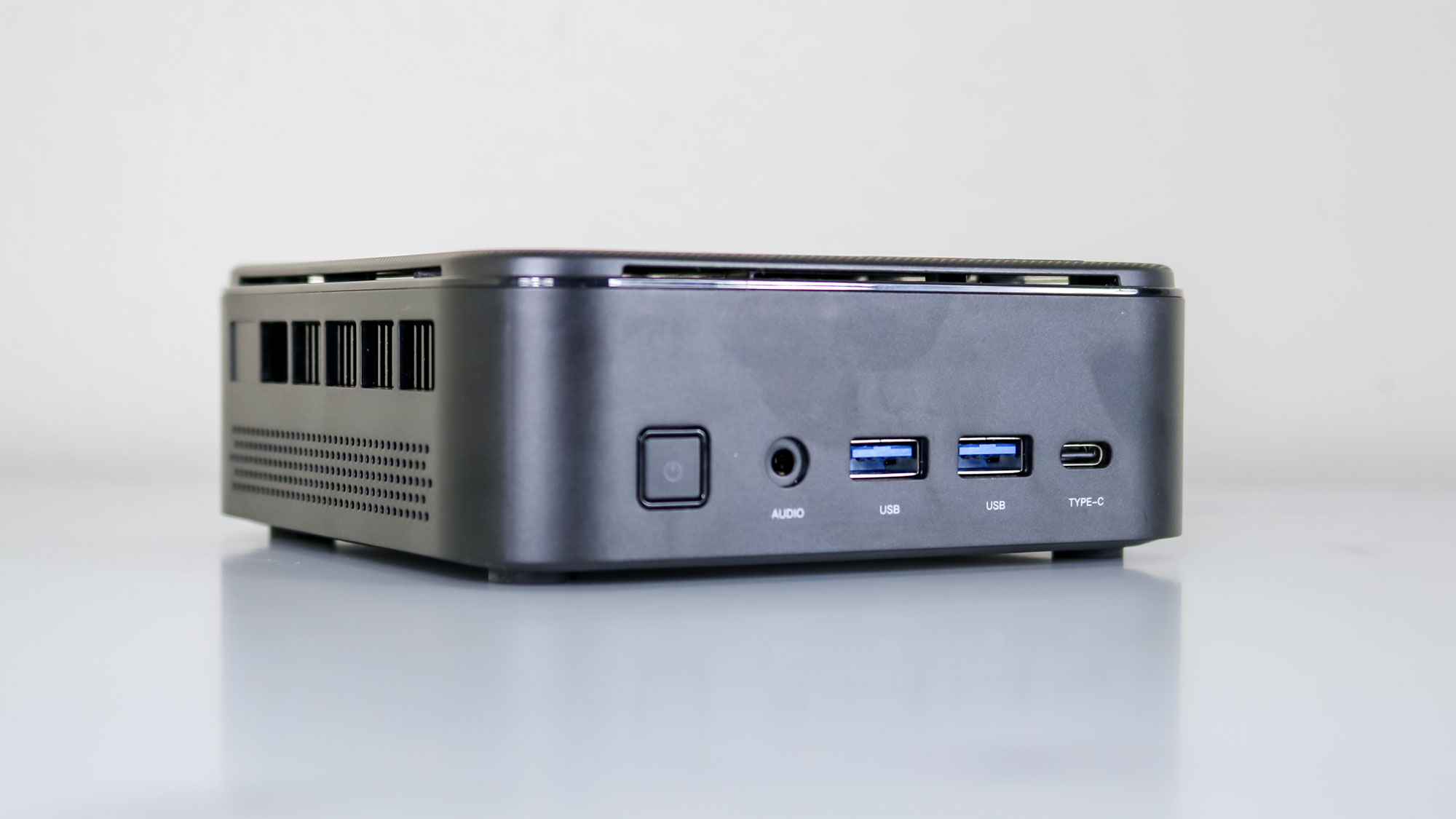
The Kamrui E3B has a good selection of ports at both the front and rear of the device. On the front, there are two USB-A ports, a USB-C port, a 3.5mm audio jack and the power button. Since this is a USB 3.2 Gen2 Type-C port, you can also use it for video-out and on my desk setup, I’m using it to power a touchscreen portable monitor under my main ultrawide display.
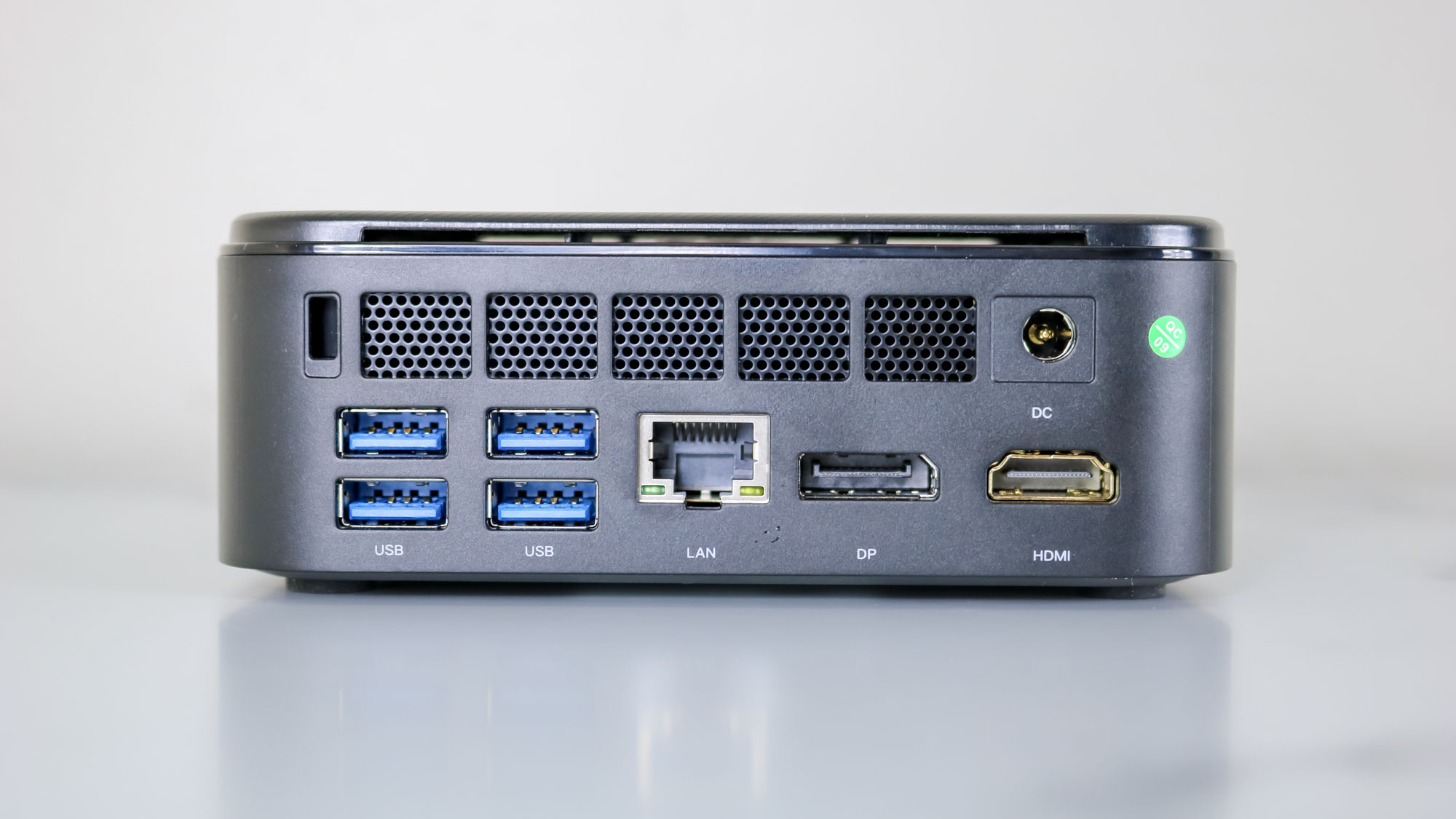
Around back, there are four USB-A ports, an HDMI 2.0 port, a DisplayPort 1.4, a gigabit Ethernet port and a DC-in port for its barrel connector power jack. I would have liked a 2.5 gigabit Ethernet port instead for multi-gig internet, but at this price point, it’s hard to complain. Likewise, having the USB-C port on the back would make a bit more sense, but even the more expensive Acemagic F2A has one in the same place. If you need USB-C ports for video-out on the back of your mini PC, check out the Asus NUC 14 Pro.
Plenty of power on a budget
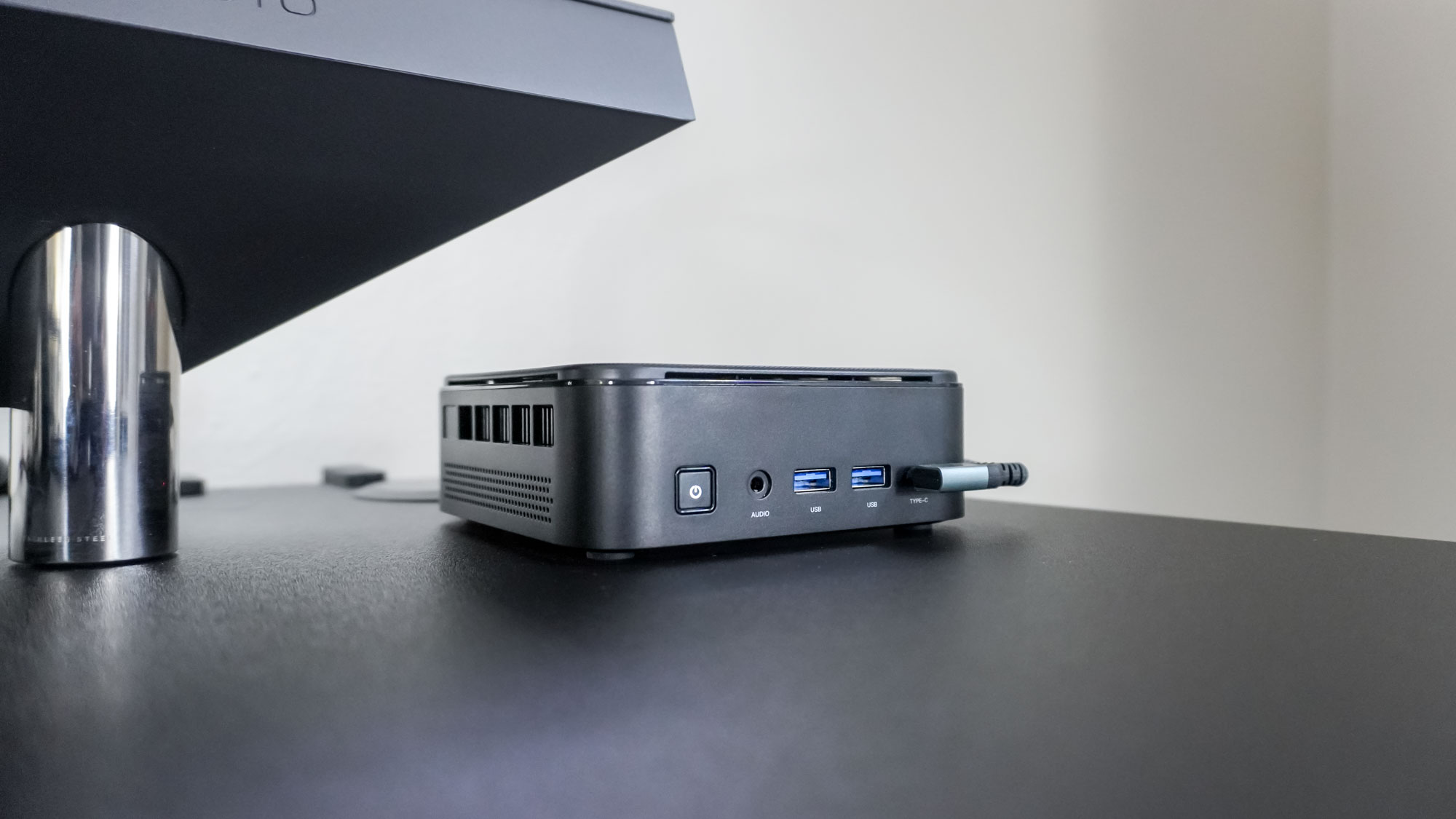
Back when I first got into mini PCs, I tried out a few very budget-friendly options that were easy on my wallet but left me wanting more when it came to their performance. This isn’t the case with the Kamrui E3B, which instead of one of Intel’s cheaper N-series processors, uses an Ryzen 7 PRO 5875U CPU with 8 cores, 16 threads, 16MB of L3 cache and can reach as high as 4.5GHz.
Since this is a Ryzen 7 processor after all, you also get integrated Radeon RX Vega 8 Graphics, which can use up to 2GB of this mini PC’s 16GB of DDR4 RAM. When it comes to gaming, this means you should be able to run older games fairly well or newer ones alright with the graphics and resolution turned down. Even then, in our test lab when running Sid Meier’s Civilization VI: Gathering Storm, the Kamrui E3B was only able to reach 19 fps at 1080p (10 fps at 4K). Your results may vary depending on the game, resolution and settings you use, but this mini PC wasn’t designed for gaming. For that, you’re going to spend a lot more on something like the AtomMan G7 PT or the Asus ROG NUC 970, which both have discrete instead of integrated GPUs.
Now when it comes to browsing the web, watching videos and doing office work, the Kamrui E3B is more than capable. This little mini PC starts up fast and can handle running multiple apps simultaneously well for the price. I also used it for some light photo editing with GIMP, though I mainly had several Chrome windows with multiple tabs open (more on that later) while working.
Kamrui E3B: The downs
The Kamrui E3B gets a lot right, especially at this price. However, there are a few downsides to be aware of. For instance, the built-in 512GB M.2 SSD isn’t the fastest and I did notice some slowdowns when I had an unhealthy amount of Chrome tabs open at the same time.
Held back by its built-in storage
In a similar vein to the base model of the Mac mini M2, the Kamrui E3B is also equipped with an SSD that has less than preferable read/write speeds. The included 512GB Netac G537N M.2 SSD has a max sequential read speed of 560 MBps and a max sequential write speed of 520 MBps. In our 25GB file copy test conducted in our lab, the E3B’s had a write speed of 449 MBps.
To put this into perspective, the slowest M.2 SSD on our list of the best PS5 internal SSDs had a read speed of 5,561 MBps during testing. Granted, the Corsair MP600 Pro LPX (2TB) goes for $200 or half of the total price of the E3B.
If you plan on reading or writing a lot of files with the Kamrui E3B and want to cut down on the time it takes to do so, you can always add a second, faster SSD thanks to its extra M.2. Likewise, you could clone the contents of the SSD it ships with onto a faster drive for speedier performance overall.
| Header Cell - Column 0 | Kamrui E3B | Acemagic F2A |
|---|---|---|
| Geekbench 6.3 single-core | 1947 | 2271 |
| Geekbench 6.3 multi-core | 5836 | 11170 |
| 25GB file copy test (MBps) | 449.60 | 1176.49 |
| Handbrake (Mins:Secs) | 8:35 | 4:41 |
Not quite a multitasking powerhouse
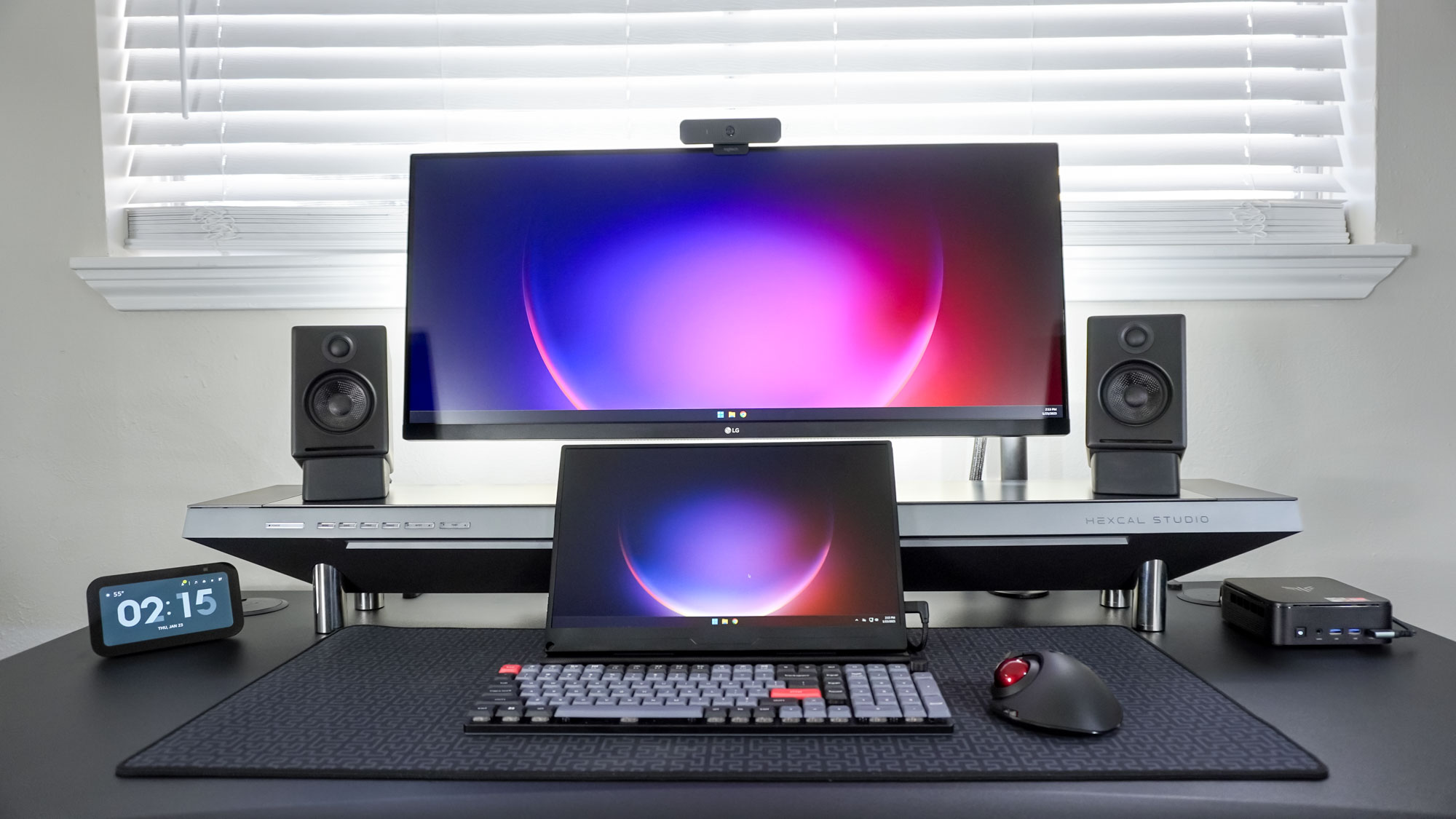
Instead of building a brand new desk setup around the Kamrui E3B, I decided to use it at my main desk where I have an ultrawide monitor as my main display with a portable monitor underneath it. I used the HDMI 2.0 port to connect the mini PC to my ultrawide monitor and the USB-C port at the front to connect it to my portable monitor, which acts as a second display.
With a Ryzen 7 CPU and 16GB of DDR4 RAM, I figured it would be able to keep up with my workflow and it almost did. I’m a Chrome power user if there ever was one and as I write this, I have three browser windows open (two side by side on the ultrawide and one on the portable monitor) with a total of 27 tabs.
I’m currently using 11.7GB of the 15.4GB of available system memory and I’m having flashbacks to when I spent a week with the Mac mini M2 ahead of the release of the Mac mini M4. If I limit the number of open tabs, the E3B runs fine, but when I go down a rabbit hole researching something, I notice some slowdowns and momentary hang-ups.
The good news is that unlike with a Mac mini, I can easily open the E3B up and double its memory for around $50 for 32GB or max it out for a little over $100 for 64GB. Sure, this is a budget mini PC, but there’s room to expand if it doesn’t quite meet the needs of your workflow performance-wise in terms of memory and storage.
Kamrui E3B: Verdict
The Kamrui E3B is a sleek, compact and quiet mini PC with a good selection of front and rear ports. It performed better than I expected for the price and if you manage to snag it on sale for almost $100 off, it’s a steal of a deal at less than $300.
At the end of the day, the E3B is a budget mini PC that punches well above other similarly priced yet less well-equipped models. The Ryzen 7 processor, 16GB of DDR4 RAM and 512GB SSD will be more than enough for most people looking to replace an old laptop or desktop without breaking the bank. If the E3B does fall short for you performance-wise, you always have the option to easily swap in a new M.2 SSD or add more memory.

Anthony Spadafora is the managing editor for security and home office furniture at Tom’s Guide where he covers everything from data breaches to password managers and the best way to cover your whole home or business with Wi-Fi. He also reviews standing desks, office chairs and other home office accessories with a penchant for building desk setups. Before joining the team, Anthony wrote for ITProPortal while living in Korea and later for TechRadar Pro after moving back to the US. Based in Houston, Texas, when he’s not writing Anthony can be found tinkering with PCs and game consoles, managing cables and upgrading his smart home.
